Petaluma’s location at the head of a tidal slough established it as the commercial hub of the North Bay region. As early as 1850 schooners were making regular trips up and down the river. River traffic grew to include paddlewheel steamers with capacities up to 300 tons.
Petaluma’s strategic position as a river town was fully realized 100 years ago this month when two major projects were completed with the creation of a 300 x 300 foot turning basin and the Petaluma & Santa Rosa Railway’s spur track and trestle along the west bank of the Petaluma River.
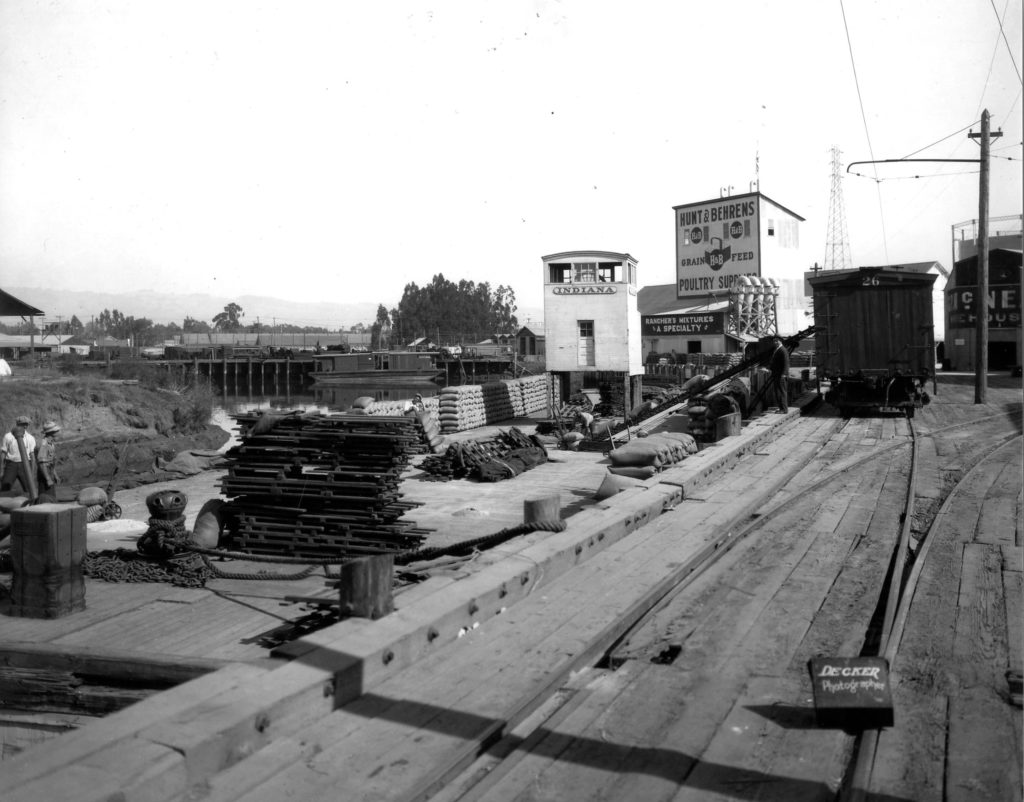
The trestle serviced the valuable spur line for decades. Warehouses loaded directly onto rail cars on the spur, while cargo was moved to and from rail cars to barges.
With the completion of the Golden Gate Bridge and the growth of the trucking industry during the 1930s, commercial traffic on the river declined.
By 1947, Hunt & Behrens, one of the major shippers on the Petaluma River, relocated from the foot of C Street to Lakeville Street. Even now, 75 years later, they rely on trains and trucks for transporting goods rather than the river.
During the 1960s the Golden Eagle Mill was demolished and the G. P. McNear Feed Mill largely destroyed by fire. Like Hunt & Behrens, these businesses depended on the river and rail to transport and receive goods.
In 1968, the drawbridge at Washington Street was replaced with a fixed span which prevented access to businesses upriver such as Nulaid (now Dairyman’s Feed).
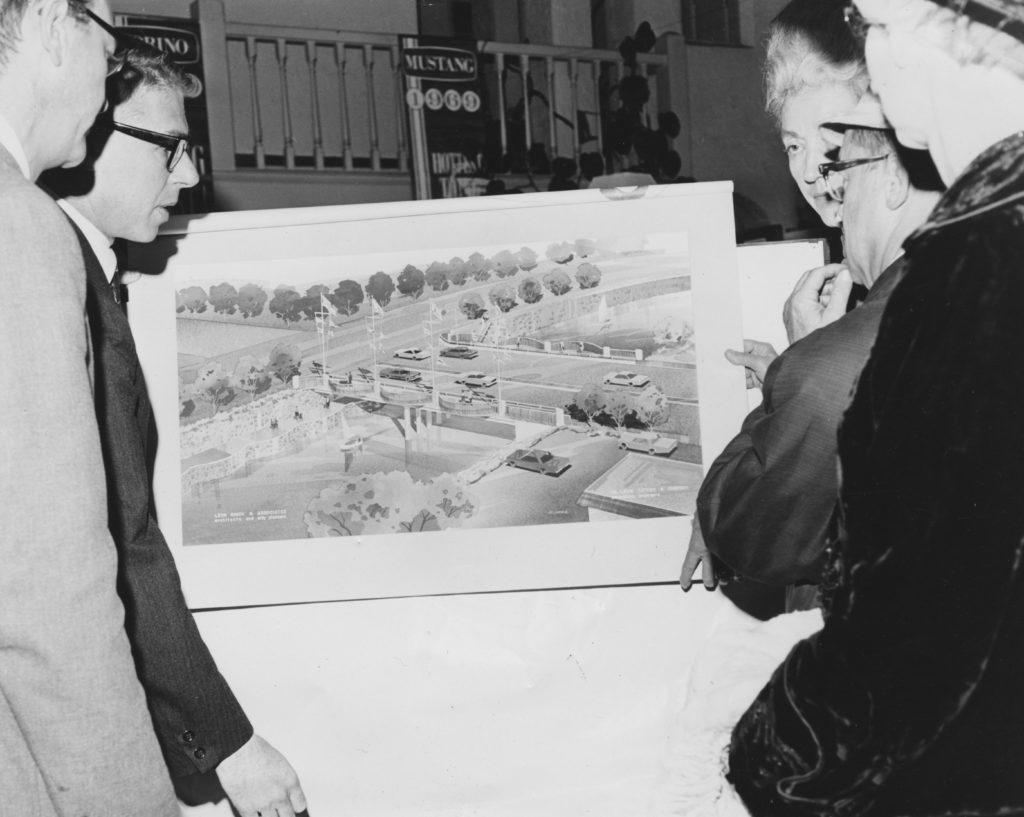
Cabin cruisers, small yachts and fishing boats replaced steamers and barges in the Turning Basin and the trestle was used as a place to gather and watch a variety of river activities.
In 1986, the Old Adobe Fiesta organizers joined forces with a group of volunteer river enthusiasts, led by Bill Rhodes, to host a joint event.
This event emphasized future beautification plans for the river, as well as recognition of the 25th anniversary of the Old Adobe Fiesta. Ten shopping areas from both sides of the town were involved. An array of entertainment from mermaid contests to mariachi bands was offered. Boat races, music, food vendors, and a visit by the San Francisco Maritime Museum’s Alma, the old gaff-rigged sailing scow that once hauled hay from Petaluma to San Francisco, were part of the activities. This event was so successful a non-profit board was established for the River Festival. In 1991 the River Festival drew 40,000 visitors.
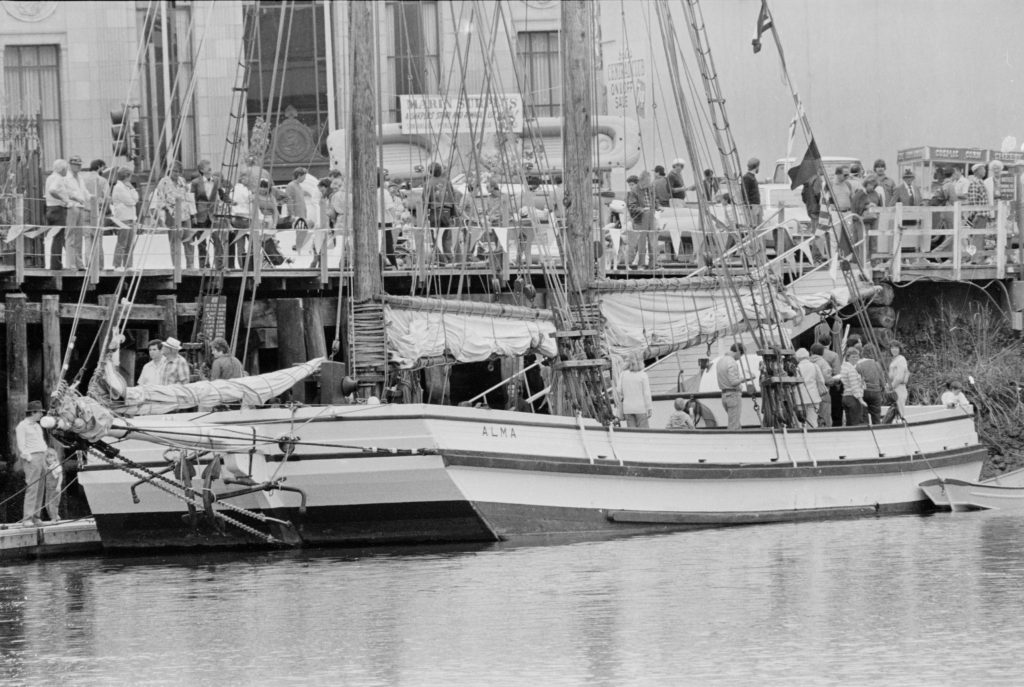
The River Festival weighed anchor in 1997. During those 12 years, volunteers raised more than $60,000 for downtown riverfront improvements and met their primary goal of bringing attention to the importance of the Petaluma River as a recreational as well as commercial resource. The City Council’s unanimous approval of the Petaluma River Access and Enhancement Plan, funded by the Coastal Conservancy, in May of 1996 is evidence of that.
The importance of the turning basin and trestle was highlighted as well in the Central Petaluma Specific Plan, which was adopted by the Petaluma City Council in June, 2003.
In 2007, the Petaluma and Santa Rosa Railroad Trestle Historic Structure Report was prepared. The author of this report found that although the trestle was in poor physical condition, it appeared eligible for listing on the National Register of Historic Places as an individual historic resource as well as a contributor to Petaluma’s historic commercial district. The trestle is a physical reminder and “symbol of the agricultural and commercial might that made Petaluma a prosperous regional transportation center for the movement of agricultural and manufacturing goods throughout Sonoma County and the greater Bay Area.”
Another California Coastal Conservancy grant helped pay for the 2013 Petaluma Trestle Rehabilitation Final Design Report. The estimated cost to rehabilitate the trestle in a manner that would accommodate pedestrians, as well as future rail use, was $5 million.
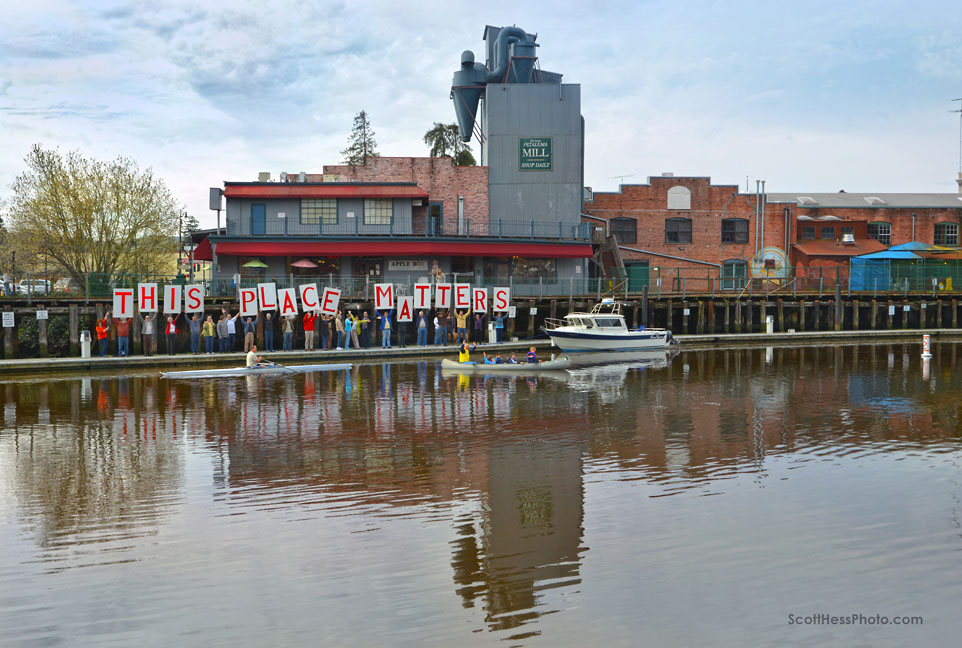
Although they had a shovel-ready project, the city did not pursue funding. While the project stalled, public interest in the trestle rehabilitation has not. Over the last few months, as the City Council reviewed its goals and priorities, they’ve heard from a diverse group of individuals and organizations that want the trestle preserved. The message was received and acted upon. At their May 2, 2022, meeting the Petaluma City Council agreed to prioritize the trestle’s rehabilitation over the next two years.
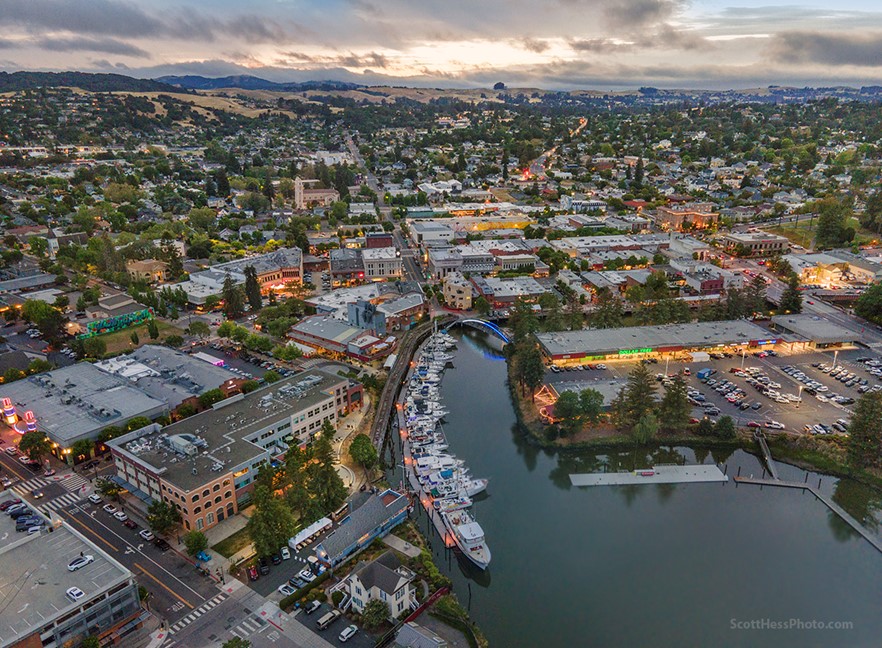
With support from the community, existing city funds, and grants, the trestle should become, within a few years, the gathering spot and viewing platform it once was. The rehabilitation project will include an educational component that will provide the opportunity for visitors to enjoy a unique public open space, while learning about the agricultural and transportation history that sets Petaluma apart from other cities.
A version of this article first appeared in the June 2022 Sonoma-Marin Farm News.
 What’s in the Exchange Bank Archives?
What’s in the Exchange Bank Archives?
Thank your Katherine for succinctly capturing the fine historical points and bringing us to the present and looking forward to the near future. This is excellent reading and a very exciting project. I will share with many who will share our enthusiasm.
Best,
Linda Corbett
Very kind words. Thank you Linda.
All new info about all old around the river for me and I eat it up — reading yr history helps me feel less like an outsider kind of benefitting from all the work others have been doing, makes me feel more part of the part-y,
THANKS!
I aim to please:)
Very interesting – and what a fine photo from Scott Hess!
Have you seen the Riverwalk plan document? I saw it once, someplace. Maybe it dates to the 1980s? Sure would like to see it again.
Thanks!
Thank you, Janet. Was that document also known as the Petaluma River Access Plan?